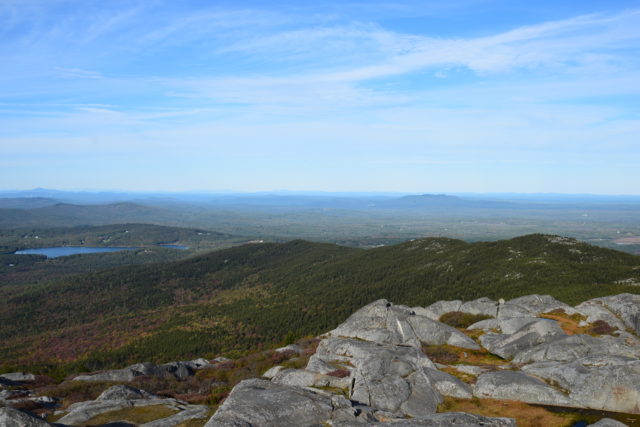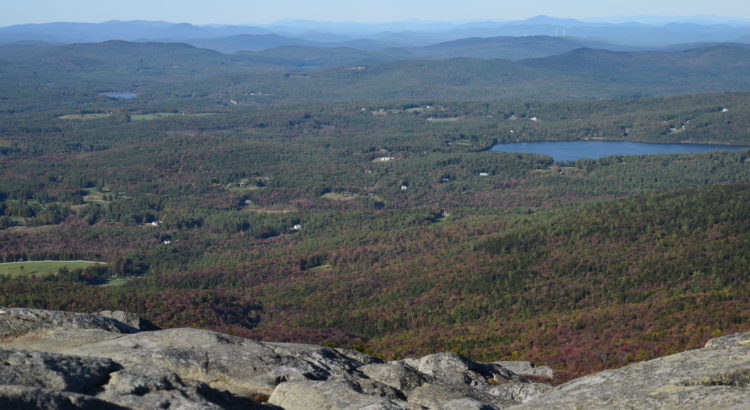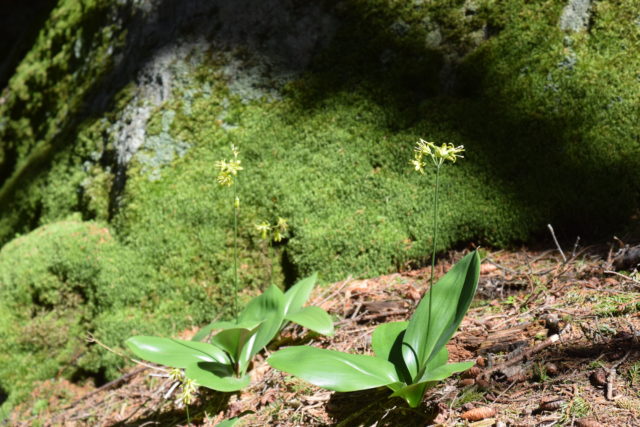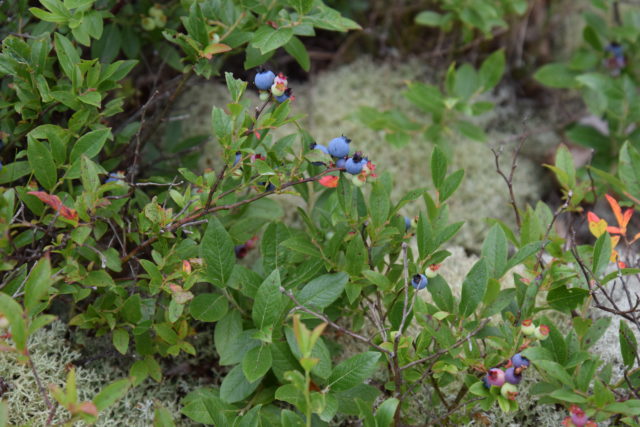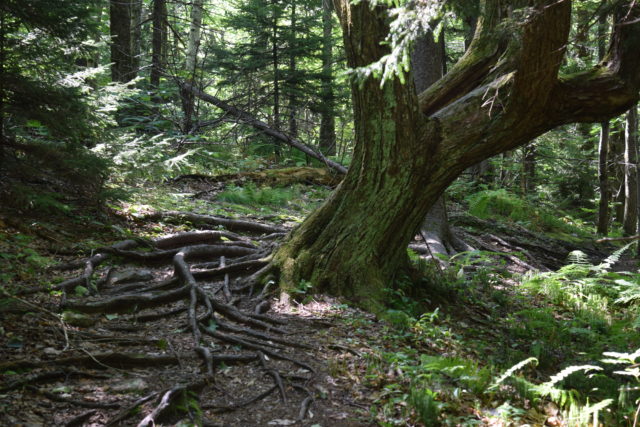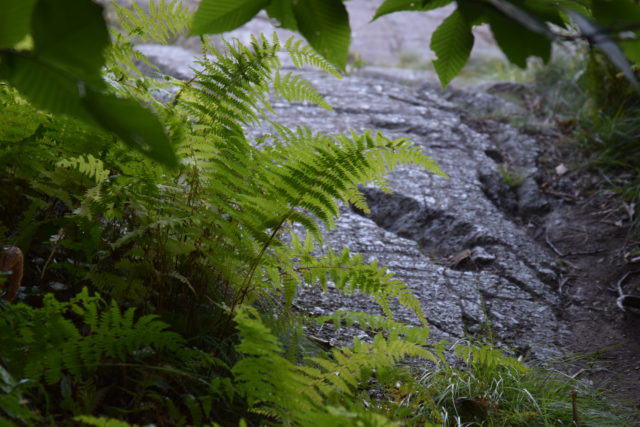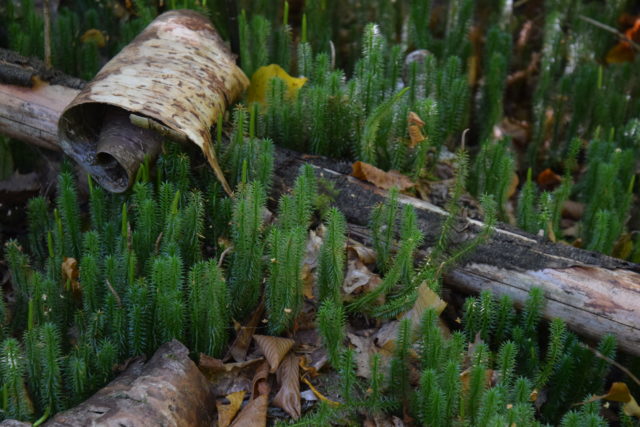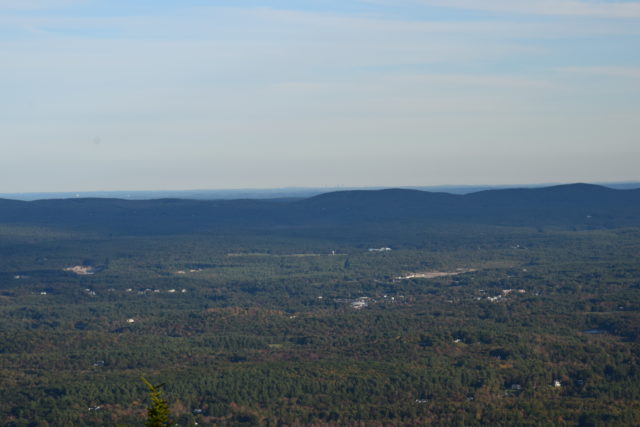By Nell Davis, SCA/Americorps Interpretive Ranger at Monadnock State Park
Not surprisingly, serving as the interpretive ranger at Mount Monadnock entails a significant amount of hiking. I have been lucky enough to explore many parts of the mountain, hiking all the park trails and spending time on Monadnock in a wide variety of weather conditions. Usually I am focused on talking with park visitors, assisting in mountain rescues, or pointing people towards a safe route off the mountain, but sometimes I have a chance to bring my camera up with me and spend a few hours taking photos as I hike. Looking back through those photos today, a few weeks before the end of the season, it is fun to see how the mountain has changed since June and how my perspective on it has also altered. As we move towards peak foliage season, welcome to a miniature photographic tour of some of the things I love about Monadnock.
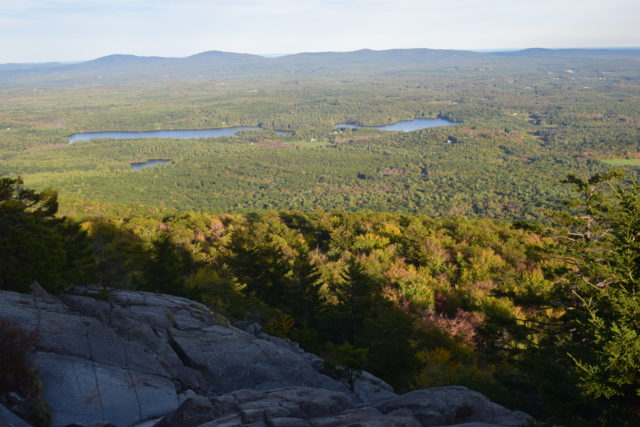
June
June was bright greens, new growth, a few hardy wildflowers, and lots of sun. It was a gorgeous beginning of summer on the mountain, and it was my introduction to Monadnock. I loved the expansive panoramas, but I was also impressed by the myriad small, less conspicuous beauties of the mountain. There were a few languid, hot, hazy days in there too, but most of the month was a crisp New England summer.
July
July continued sunny and hot; the weather was wonderful, but it was often necessary to stay on the summit in the breeze all day, escaping the muggy forest. At the same time, though, many of the plants started to really flower, the bears and ripe blueberries became visible almost simultaneously, and I had settled into a routine. I knew what photographic angles I wanted, but I was still consistently surprised as I stumbled onto new vistas and details.
Also in July, I took a few field trips on my days off. A friend and I headed over to Rhododendron State Park one day to see some beautiful, tranquil (although buggy) flowers and take a trek up Little Monadnock mountain. Later in the month, I went to explore Miller State Park and part of the Wapack Trail. I enjoyed hiking Pack Monadnock, and I also loved having a chance to say hello to some dogs. Dogs are not allowed on Mount Monadnock for a whole plethora of reasons (these include the potential environmental impact of so many hikers plus pets; the fact that dogs were often injured; that dogs were being overwhelmed by the crowds of people and other canines; that if a dog owner was hurt, it was hard to keep the dog safe and calm; and so on), but you may take leashed dogs out on a hike in Miller State Park, so I enjoyed the added bonus of meeting a few sweet canine friends.
August
August on Monadnock was still the height of summer, but some of the vegetation was starting to lose its bright shimmery green tint and head towards a deeper, more subdued green. The summit pools and small streams were slowly drying up in the heat, although humidity remained throughout the month. Wildlife was still in evidence, often beginning to stock up on winter food supplies. I spent more time looking at the smaller parts of the mountain, as I now had a decent sense of many of the more general trends, views, and mountain characteristics. August was also the time of absolutely constant rescues; I was directly involved in five, and several others happened throughout the month.
September
September is the typical New England pivot point between summer and fall, and it was the same on Monadnock. The month began warm, fairly humid, and quite summery. As it progressed, the air became crisper, nights colder, and leaves pleochroic. September is also a transition month for the Interpretive Rangers; our schedule changes, we run outreach programs in the community, and we start thinking about next steps since the program ends in October. Many of my September photographs revisit some of my favourite places, plants, or features of the mountain, but they also show a slightly wider knowledge of and appreciation for what I am looking at.
I am sure I will have at least one more chance to bring my camera up the mountain in the next two weeks, and I am looking forward to peak foliage season. I know there are plenty of park visitors out there who, like me, are hoping for some beautiful foliage photographs. Speaking as someone working at Monadnock as well as a fellow hiker, please do make sure that you are ready for the hike; it’s been chilly, windy, and crowded up on the mountain recently, so two liters of water per person, plenty of snacks, and some extra layers are all hiking necessities. As an extra heads up to some photographers, drones are not allowed on Monadnock (there is a no-fly zone around the mountain, due in part to the fact that we sometimes have to call medical helicopters).
As foliage season progresses, I am looking forward to seeing how the mountain and its vegetation continue to change, and I am excited to watch other hikers form, revise, or add to their own relationships with Monadnock.
